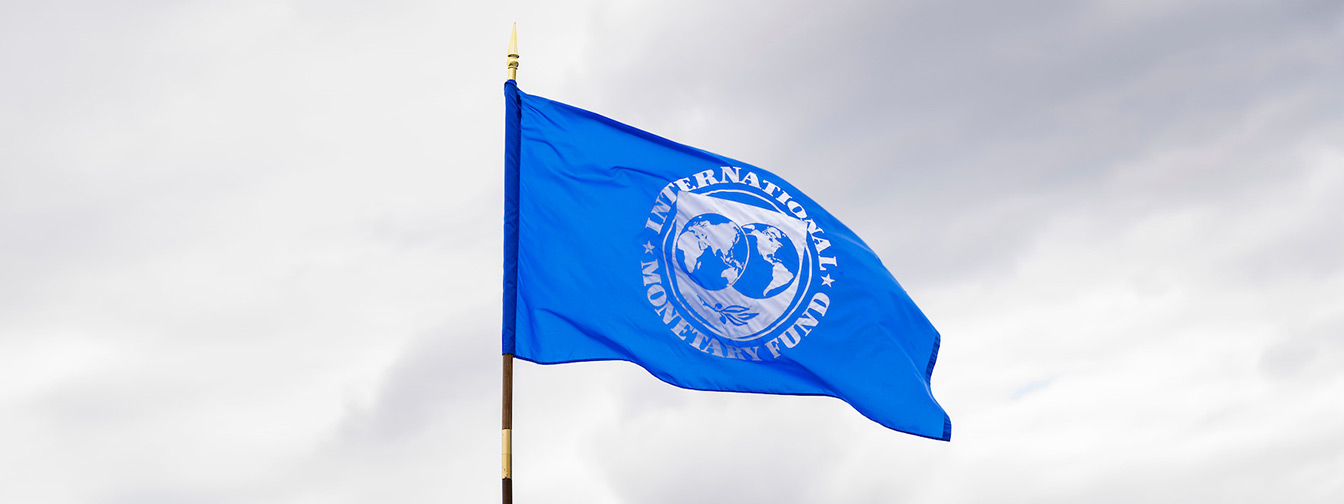RÉSILIENCE
EN PÉRIODE
DE CHANGEMENT
Télécharger le rapport dans son intégralité


L'économie mondiale a traversé une période mouvementée depuis la fin de la pandémie : tout d'abord avec des perturbations de la chaîne d'approvisionnement, une crise énergétique et alimentaire déclenchée par la guerre de la Russie contre l'Ukraine, puis une hausse considérable de l'inflation, tout cela suivi d'un resserrement synchronisé de la politique monétaire à l'échelle mondiale. La robustesse des cadres de politique économique dans de nombreux pays a contribué à la résilience mondiale. Néanmoins, nombre d'États ont traversé cette période avec des niveaux d'endettement élevés et des coûts de service de la dette en augmentation.
Le défi est désormais double. D'une part, il s'agit de préserver la stabilité macroéconomique face à d'éventuels nouveaux chocs géopolitiques, et malgré les ajustements budgétaires perturbateurs et les efforts visant à ramener l'inflation dans les fourchettes cibles. Les populations qui ressentent encore les effets des crises qui se sont succédé auront besoin d'une aide constante, tout comme les pays à faible revenu qui ont été les plus durement touchés. D'autre part, il faut tirer parti de la résilience économique mondiale pour nous attaquer ou nous adapter aux bouleversements actuels qui exigent que nous agissions collectivement ; des évolutions telles que le changement climatique ou encore l'avènement du numérique et de l'intelligence artificielle qui, pour le meilleur ou pour le pire, pourraient refaçonner la nature de notre travail à tous. La coopération mondiale sera primordiale pour atténuer les risques et saisir les opportunités qu'engendreront ces transformations.
Le FMI est bien placé pour encourager cet effort multilatéral. C'est le pilier qui soutient le dispositif mondial de sécurité financière, un forum pour lequel les pays membres se réunissent afin de fournir une assurance collective contre le risque de crise financière. Son objectif : promouvoir la coopération monétaire internationale, le commerce et la prospérité pour tous. L'achèvement de la 16° révision générale des quotes-parts a démontré la capacité du FMI à rassembler ses pays membres dans un esprit de collaboration mondiale et de multilatéralisme. Ce sens de la coopération internationale a aussi transparu dans les décisions de plus de 40 pays membres, qui par leurs contributions apportées jusqu'en 2023 ont soutenu le fonds fiduciaire pour la réduction de la pauvreté et pour la croissance, dont la capacité à mobiliser des prêts concessionnels en faveur de ses membres les plus pauvres a été accrue. Cette réussite et le travail du FMI en général viennent illustrer notre interdépendance et notre propension à collaborer avec les pays membres (et aussi des institutions partenaires telles que la Banque mondiale) pour parvenir à une stabilité économique et une prospérité partagées.



« La coopération mondiale est plus nécessaire que jamais au vu des tendances actuelles qui nous affectent tous, du changement climatique à l'intelligence artificielle. »
Kristalina Georgieva
Directrice générale du FMI
À lire également
Contenu du rapport



Pérenniser la reprise
Après des années de chocs successits, comment les pays peuvent-ils améliorer leur résilience face aux perturbations futures?



Le fmi de demain
Comment le FMI veille-t-il à répondre aux besoins de ses pays membres, aujourd'hui comme demain ?



Repenser les prêts et la dette
Comment le FMI s'adapte-t-il pour que ses prêts et son approche vis-à-vis de la dette restent aussi appropriés et efficaces que possible ?



Une grande incertitude et l'inconnu
Quelles mesures pourraient nous aider à nous préparer face aux forces transtormatrices à venir ?
